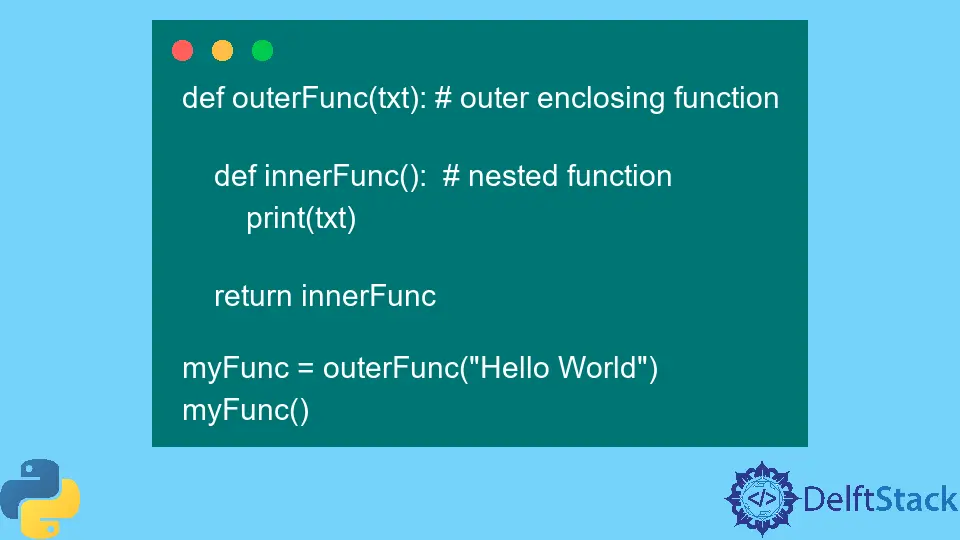Python Lambda Closure
- Syntax to Use Lambda Function in Python
- Use Lambda Function in Python
- Use Closure Function in Python

A lambda function is defined without a name. It is also known as an anonymous function in Python.
We use a def keyword to define a regular function in Python, whereas the lambda keyword is used to define a lambda function.
This tutorial will teach you to use lambda function and closure in Python.
Syntax to Use Lambda Function in Python
The syntax for lambda function in Python is:
lambda arguments: expression
A lambda function can have only multiple arguments but only one expression. It evaluates the expression and returns the result.
Use Lambda Function in Python
The following example adds 5 to the given value and prints the result.
def total(a):
return a + 5
print(total(10))
Output:
15
Add multiple arguments and return the result.
def total(a, b, c):
return a + b + c
print(total(10, 15, 20))
Output:
45
In the above example, lambda a,b,c: a+b+c is a lambda function where a,b,c are arguments and a+b+c is an expression. The expression is calculated and displayed in the output.
The lambda function has no name and is assigned to a variable total.
This line:
def total(a, b, c):
return a + b + c
It is equivalent to this:
def total(a, b, c):
return a + b + c
Use Closure Function in Python
Before learning closure, you must first understand Python’s concept of a nested function and non-local variable.
A nested function is defined inside another function and can access variables of the enclosing scope.
Such non-local variables can only be accessed within their scope and not outside their scope in Python.
The following example shows a nested function accessing a non-local variable.
def outerFunc(txt): # outer enclosing function
def innerFunc(): # nested function
print(txt)
innerFunc()
outerFunc("Hello World")
Output:
Hello World
As you can see, the nested function innerFunc has accessed the non-local variable txt of the enclosing function outerFunc.
A closure is a function object that can remember values in enclosing scopes even if they go out of scope.
def outerFunc(txt): # outer enclosing function
def innerFunc(): # nested function
print(txt)
return innerFunc
myFunc = outerFunc("Hello World")
myFunc()
Output:
Hello World
In this example, the nested function returns the innerfunc() function instead of calling it. The outerFunc() function is called with the text Hello World and assigned to a variable myFunc.
And when calling myFunc(), the value was remembered outside the scope.
If you remove the original function, the value in the enclosing scope will still be remembered.
del outerFunc
myFunc()
Output:
Hello World
The following is a simple demonstration of using lambda function and closure in Python.
def sum(x):
def total():
def calc(x):
return x + 5
print(calc(x))
return total
myFunc = sum(5)
myFunc()
Output:
10
Now you should know how to use lambda functions and closures in Python. We hope you find this tutorial helpful.
